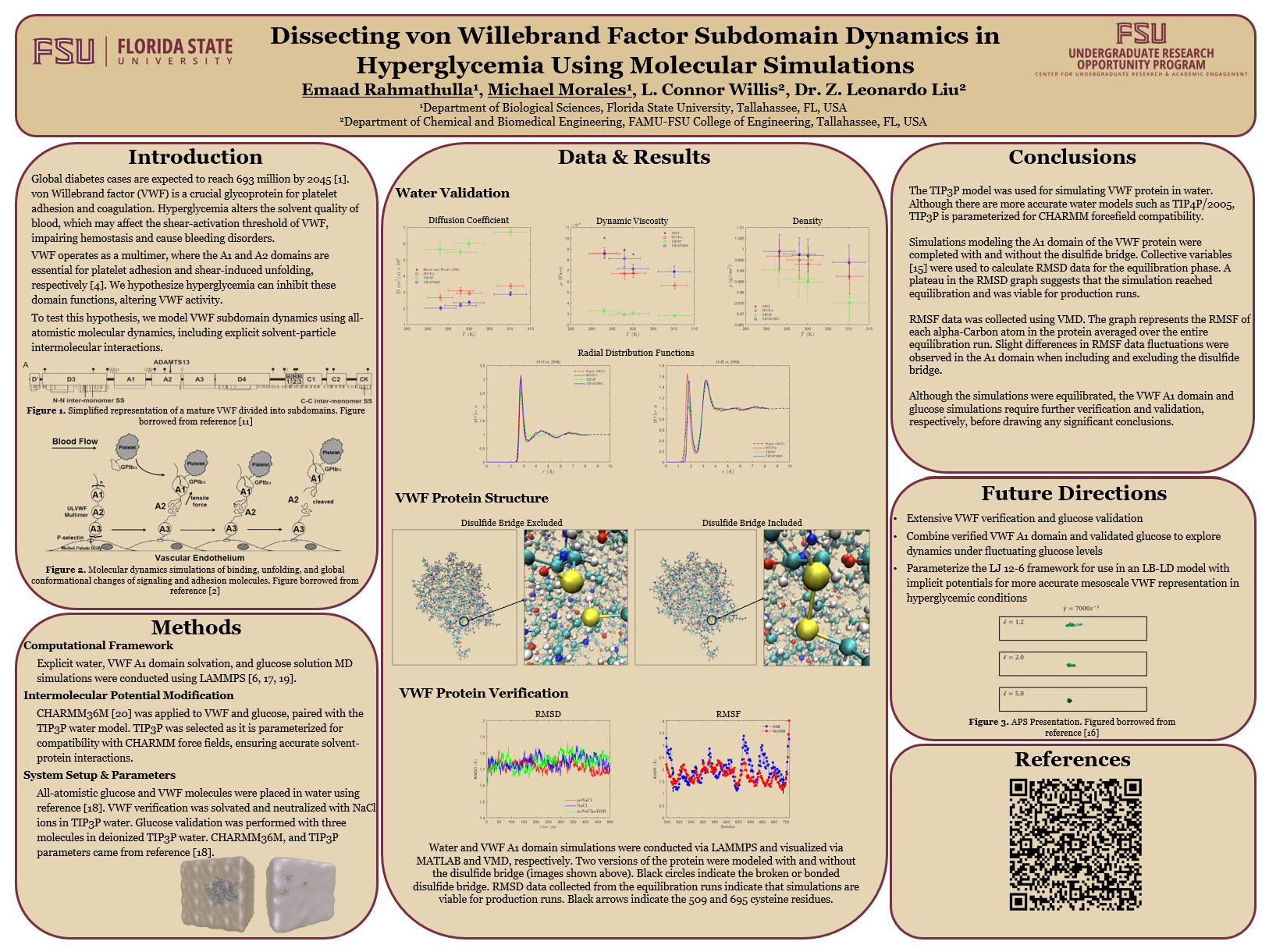Research Symposium
25th annual Undergraduate Research Symposium, April 1, 2025
Emaad Rahmathulla Poster Session 2: 10:45 am - 11:45 am/ Poster #88

BIO
Emaad Rahmathulla is a freshman in the Honors program at Florida State University. He is studying Cell and Molecular Neuroscience and is interested in learning more about complex physiological processes. Emaad's current research focuses on using LAMMPS to explicitly model von Willebrand Factor (VWF) protein. Due to the lack of research including explicit solvent-particle interactions, the study aims to refine the parameters for simulations so that explicit models are more accurate and precise. In addition to UROP, Emaad volunteers at Tallahassee Memorial Hospital and runs with the Seminole Striders Run Club, recently competing in the Gate River Run.
Dissecting von Willebrand Factor Subdomain Dynamics in Hyperglycemia Using Molecular Simulations
Authors: Emaad Rahmathulla, L. Connor WillisStudent Major: Cell and Molecular Neuroscience
Mentor: L. Connor Willis
Mentor's Department: Department of Biomedical and Chemical Engineering Mentor's College: FAMU/FSU College of Engineering Co-Presenters: Michael Morales
Abstract
Von Willebrand factor (VWF) is a multimeric glycoprotein essential for hemostasis, playing a critical role in platelet adhesion and coagulation. Under normal conditions, VWF unfolds in response to shear forces which allows the A1 and A2 domains to function and begin regulating clot formation via platelet adhesion. Recent research has shown that excess sugar in blood may increase the shear-activation threshold of VWF. This could impair its ability to unfold properly, potentially leading to bleeding disorders in diabetic patients. Our study uses molecular dynamics simulations to investigate the impact of hyperglycemia on VWF subdomain dynamics while also refining the parameters for explicit models. This approach enhances the accuracy of VWF simulations under hyperglycemic conditions and lays the groundwork for implementing a Lattice-Boltzmann Langevin-Dynamics (LB-LD) framework in future studies. Using explicit solvent-particle interactions, we model the structural behavior of the subdomains with glucose in simulations. This allows us to capture the molecular-scale effects of hyperglycemia on VWF flexibility and unfolding. We used two water models for simulations: TIP3P and SPC/Fw. While both accurately replicate physiological conditions, they emphasize different molecular interactions. Water models were validated at 293K, 298K, and 310K by analyzing variables such as density and viscosity. VWF protein and glucose were then implemented into the system using the TIP3P and SPC/Fw models, respectively. Data from these simulations were analyzed and visualized using Visual Molecular Dynamics (VMD) which were then validated with other literature.
Keywords: VWF, Molecular Dynamics Simulations, Hyperglycemia


